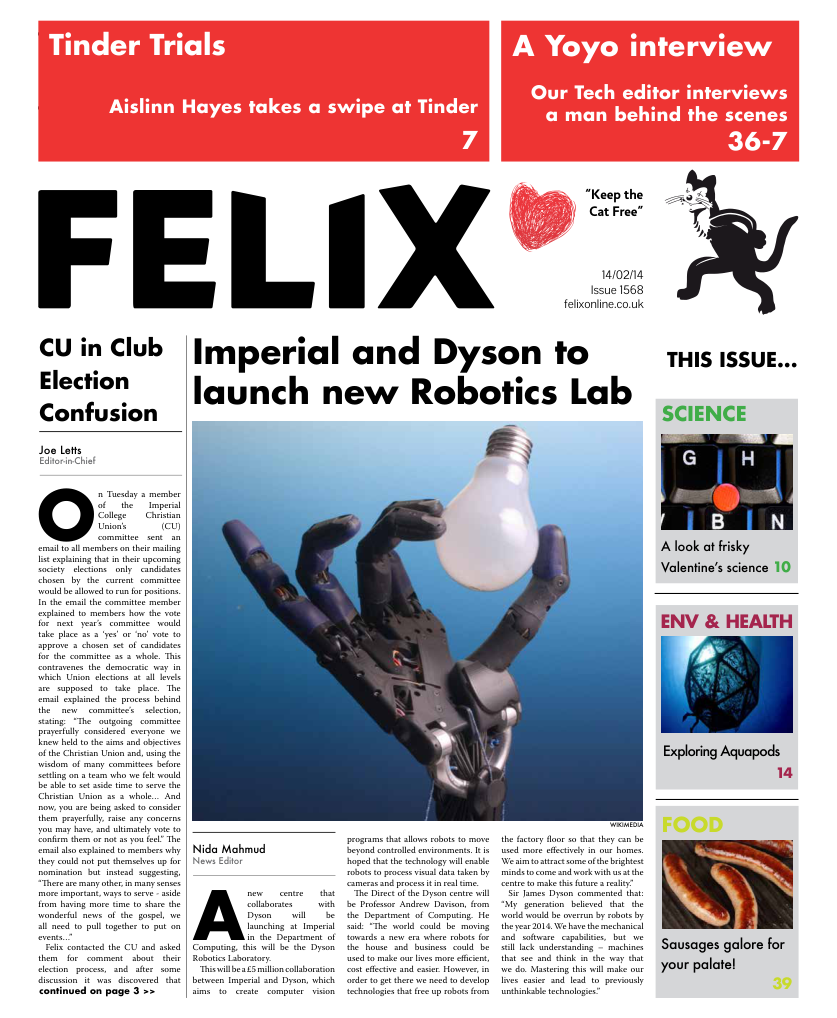Brum Photorealism
You’d be forgiven for thinking that London is the place to be for everything arts related...
What: Photorealism
Where: Birmingham Museum and Art Gallery
When: Until 30th March
Price: £6.50, £5.50 students
You’d be forgiven for thinking that London is the place to be for everything arts related. But you’d also be wrong. As vibrant as it is, the capital doesn’t have room for everything, and that’s where the UK’s second city Birmingham steps in. Being only an hour and a half away and with return train tickets as cheap as £8, it’s well worth a day trip, and you’ll be relieved to realise that being tired of London doesn’t mean you’re tired of life.
Currently showing at the city’s museum and art gallery is Photorealism, an exhibition displaying the art movement with a name as literal as its paintings. It is the biggest exhibition in the UK so far to show the style born from 1960s America but with a strong development in just 50 years, evident in its more contemporary pieces.
If it still isn’t clear, photorealists paint images which are hyperrealistic, and more objective compared to their emotional counterparts such as in pop art, abstract art, or minimalism. However, not just one for the abstraction haters, it is interesting to see how the artists express themselves with distant subjects, using their choice materials, unique interpretation, and changing perspectives, sometimes verging on the edge of abstractionism. For a movement dubbed as intellectually void by some of the art world, the subtle differences which translate into obviously dissimilar styles between artists surely make these pretentious claimants the ones devoid of intellect.
The exhibition starts off in America. The feel is vintage, nostalgic, with a strong whiff of the American dream: consumerism. Painters stick to their own specific themes; one rendering store fronts into 2D images, another sharing the blissful past time of movie theatres, a third only painting diners, more of others doing their own thing.
Despite the idea that the paintings share a common theme of realism, some seem obviously more life-like than those which are relatively illustrative, with others in the middle reminiscent of 3D computer animation. For the former, pressing your nose up against the glass doesn’t help in trying to persuade yourself that, eerily, they are indeed paintings and not photographs.
Themes move away from the glamour of Americana to everyday suburbia and paintings of family photographs. Subjects range from interior designs seen in magazines, family and friends going about daily routines, and still life. It is with objects such as condiments, sweets, toys, and glass surfaces that the painters are able to play with the focus, the seen and unseen, and space and interactions to produce their particular versions of photorealism.
Moving further away still, small town America is joined by other cityscapes. The personality of each place is portrayed by classic scenes such as the London Underground and Trafalgar Square - both uniquely British yet separated by stylistic representation. A small section explains how Ben Johnson, as most photorealists typically do, collated thousands of photos of his chosen subject - the view towards Richmond House - before projecting it onto a large canvas and making a line drawing. He then chose the medium of airbrushing to fill in the blanks. Other artists like Raphaella Spence had their own method. She transferred Vegas’ bright lights and Venice’s gondolas, both photographed from a helicopter, pixel by pixel to canvas.
Despite the changes of theme throughout the exhibition, repetitive motifs remain. The automobile as vintage vehicles of the 60s, proud owners standing family cars in the 80s, a manifestation of east to west coast USA migration in following the American dream, decaying abandoned pieces, toy cars, and impressive works by ex-Cadillac and ex-Chevrolet head designer Peter Maier, who sprays layers of automobile paint onto aluminium sheets to create a photo-like close-up of shiny car bodies. This makes the image to be distinguished different depending on the point of the room where the viewer stands. Another example of, at once, falling into the hyperrealistic discipline with an abstract tint.
The only theme which was slightly underwhelmed by the photorealist method were the portraits. The distance and coldness applied to the subjects stripped away the emotion which usually allows viewers to feel connected to the models, leaving apathy towards the pieces. Naked and scantily clad ladies also featured, and surprisingly paintings of beautiful girls frolicking around in woods were the least stimulating paintings there. However, these were only a few among the dozens of more impressive pieces.
The art gallery also did a fantastic job of evoking a sense of questioning and understanding of the pieces, giving them context not only in term of history and geography, but also the different opinions and comprehensions of them - allowing the viewer to make their own judgements without needing to be an art boffin.





